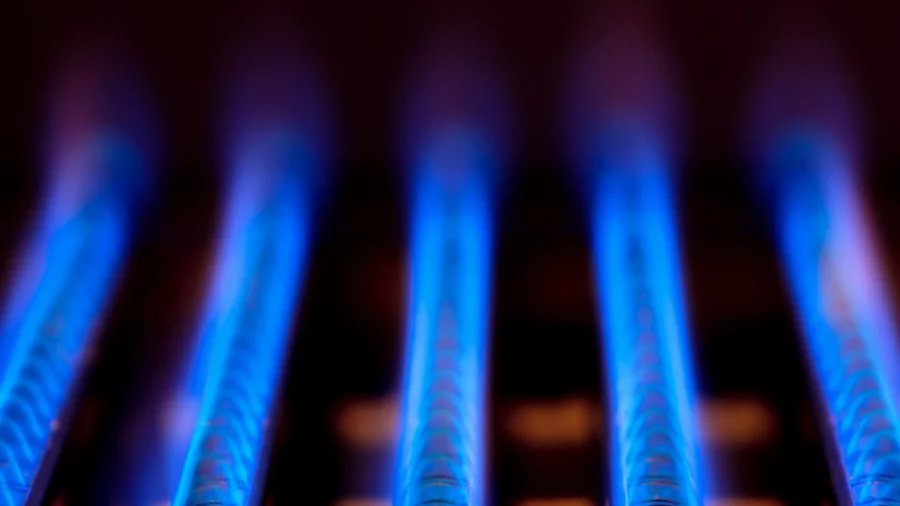In another round of restrictions on American household appliances, the Biden administration on Friday announced new energy efficiency standards for residential gas furnaces.
The move is estimated to cut household utility bills for Americans by some $1.5 billion annually, the Department of Energy (DOE) said in a release, adding that over three decades, consumers would expect to see estimated cumulative savings of $24.8 billion collectively.
The DOE also said the new standards will “significantly reduce greenhouse gas emissions” from the residential sector.
“At the direction of Congress, DOE is continuing to review and finalize energy standards for household appliances, such as residential furnaces, to lower costs for working families by reducing energy use and slashing harmful pollutants in homes across the nation,” Energy Secretary Jennifer Granholm said in a statement.
Set to take effect in 2028, these standards targeting specific gas furnaces—non-weatherized gas furnaces and those used in mobile homes—require them to achieve an “annual fuel utilization efficiency” (AFUE) of 95 percent.
This means that in five years, manufacturers will only have the green light to sell furnaces that transform at least 95 percent of fuel into heat. Presently, the industry standard AFUE for home furnaces is 80 percent.
The standards were last updated in 2007. The new standards are expected to “[reduce] waste by converting nearly all of the gas used into heat for the living space,” according to the department.
“This standard is readily achievable by modern condensing furnaces, which use secondary heat exchangers to capture excess heat from the furnace’s exhaust gases.”
Due to the strict AFUE standards, the regulations will effectively phase out older furnace models, including non-condensing gas furnaces, which tend to be less efficient but more affordable.
Consumers considering replacing their non-condensing furnaces with a condensing one after the rule’s implementation are likely to face substantial installation costs.
The DOE said that as of 2022, residential gas furnaces account for about 19 percent of annual household energy use in the United States. In its final rule, the DOE noted that Canada had imposed condensing furnaces for residential heating more than 10 years ago.
“DOE expects that updating efficiency standards for these appliances will, over 30 years, cut carbon emissions by 332 million metric tons (roughly equivalent to the combined annual emissions of 42 million homes, or approximately 34 percent of homes in the United States) and cut methane emissions by 4.3 million tons (an amount equivalent to the combined annual emissions of 14 million homes or roughly 29 coal plants),” the department said in the release.
The latest national efficiency rule is part of the administration’s long-term agenda to achieve a 50 to 52 percent reduction in greenhouse gas emissions by 2030.
In October 2022, a group of 28 trade associations, which include the American Gas Association, the American Public Gas Association, and the U.S. Chamber of Commerce, told the DOE that the proposed efficiency standards could adversely affect consumers who would have to update their current venting systems to fit a new furnace model.
“Modifications to furnace efficiency standards will significantly affect the availability and affordability of consumer heating equipment, so DOE should not eliminate affordable heating options for consumers and small businesses,” the trade associations told the department.
At the time, nine electric and gas utilities were supportive of the proposal and urged the DOE to help lower-income customers with upfront costs.
In the final rule, the DOE stated: “The possibility that some technologies may not be sufficient to achieve compliance is true for any performance standard, and does not transform a performance standard into a de facto design requirement.
“DOE acknowledges that the [non-weatherized gas furnaces] and [mobile home gas furnaces] that currently achieve 95-percent AFUE do employ condensing technology,” it added. “However, the performance-based standards adopted in this final rule do not preclude new or alternative heat exchanger designs, venting systems, or materials from being used in future furnace product designs, which may provide additional avenues (alone or in combination) for increasing furnace AFUE.
“In addition, this final rule provides a five-year lead time before compliance with the amended standards is required, so further innovation may be possible during that time.”
Republican lawmakers have taken issue with President Joe Biden’s green energy initiatives, especially with regard to the cost burdens on American families and the limits placed upon consumers’ choices. Recently, the lawmakers voiced concerns over Mr. Biden’s push for electric vehicles and restrictions on gas stoves.
The DOE has rolled out updated standards in recent months for an array of other appliances, including clothes washers, refrigerators, and air conditioners.
The Biden administration is advancing rules affecting a variety of other appliances, such as pool pumps, battery chargers, ceiling fans, and dehumidifiers, per the latest federal Unified Agenda—a semiannual government-wide compilation that outlines intended regulations for the coming 12 months.
The DOE said that its past and planned energy efficiency actions will save Americans some $570 billion and reduce greenhouse gas emissions by more than 2.4 billion metric tons cumulatively over 30 years.
From The Epoch Times


